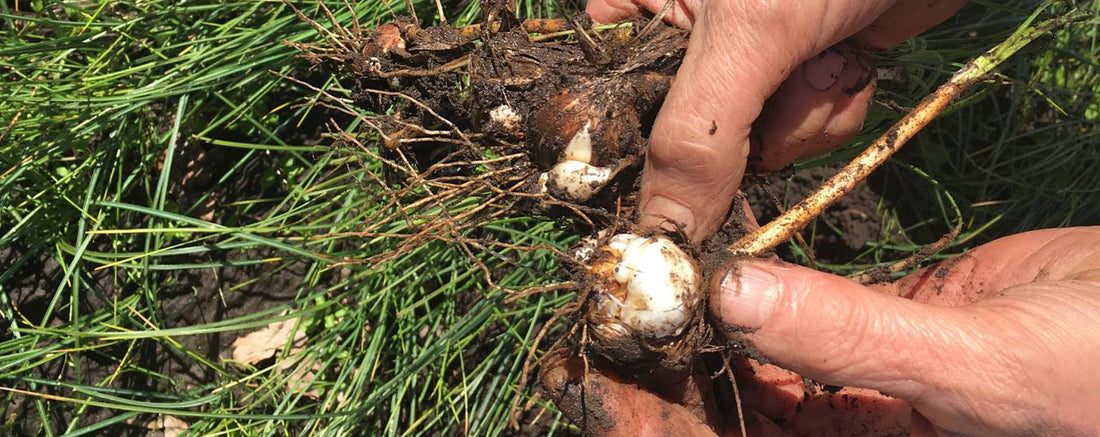
Corm development in saffron cultivation
Share
In the lifecycle of saffron (Crocus sativus), every stage plays a key role—but the corm development stage, spanning from April to June, is where the groundwork for the next harvest is laid.
This quiet, transitional phase comes just after the lush greenery of winter begins to fade. The saffron plant, having completed its leaf growth, begins to shift energy underground, focusing on the creation of new secondary corms that will carry the crop into the future.
What happens during corm development?
As the days grow warmer in spring, saffron leaves naturally begin to wither and turn brown. This is completely normal. Above-ground growth comes to an end, but underground, the real transformation begins.
Here's what’s happening beneath the surface:
- The parent corm, which supported leaf growth and corm multiplication through winter, starts to decompose;
- Around it, a cluster of new, healthy corms—called secondary corms—take shape;
- These new corms are nourished by the stored energy from the leaves and the remaining resources of the parent corm.
By the end of this stage, the parent corm dies off completely, and the secondary corms are now fully formed, preparing to become the next season’s producers of saffron.

Why the corm development stage matters
This is not just a cleanup phase—it’s a critical turning point in saffron cultivation. The quality, size, and number of new corms formed during this stage directly affect:
- Next year’s flowering potential
- Long-term yield of the field
- Corm health and resistance to disease or rot
- Sustainability of the saffron bed over multiple years
In essence, this is when the future of the crop is decided.
Best practices for supporting corm development
While the saffron plant manages much of this transition on its own, there are key things farmers can do to support healthy corm formation:
1. Avoid overwatering
As the plant enters this transition, reduce irrigation. The soil should begin to dry out naturally. Too much moisture at this stage can cause rot in newly forming corms.
2. Remove dead foliage
Once leaves are fully withered and dry, they can be gently removed to keep the beds clean and reduce the risk of fungal infections.
3. Resist digging
Allow the corms to remain undisturbed underground. Corm separation and transplanting (if needed) should be done later in summer, during full dormancy.
4. Monitor soil conditions
Ensure the soil remains well-drained, with no standing water. Spring rains combined with poor drainage can be harmful at this sensitive stage.
What comes next?
After corm development is complete in late June, the saffron field enters dormancy from July to August. While nothing appears to be happening above ground, the field is in a deep resting state, preserving the energy of the new corms and setting the stage for sprouting and flowering in the fall.
